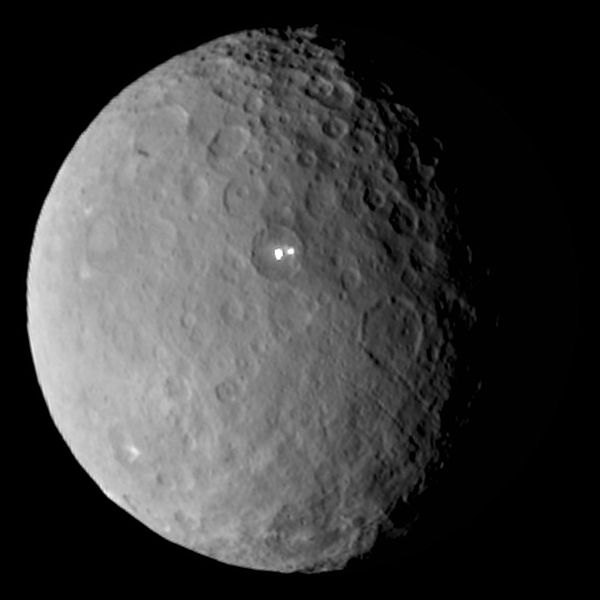This cache is part of a 1:133,700,000 scale model of the solar system. The dome on the Monroe County Courthouse in downtown Bloomington serves as a model of the sun. Ceres is about 906 km wide and 978 km tall, so this model is about a quarter of an inch wide and five sixteenths of an inch tall. Ceres ranges from 381 to 447 million kilometers from the sun, so I've hidden the cache about 1.77 miles from the Courthouse, right at its perihelion (that's the point where it's closest to the sun).

Ceres is the largest object in the asteroid belt, named after Ceres, a Roman goddess of agriculture. When it was first discovered in 1801, it was classified as a planet, and it remained that way for decades before other objects were discovered with very similar orbits and it was reclassified as an asteroid. In the early 21st century, when the IAU realized that they actually needed to write down what counted as a planet, instead of just following the old tradition of just doing whatever felt right, it was reclassified as a dwarf planet because it was big enough for its gravity to keep it relatively round, but not big enough to have cleared all the other asteroids out of its orbit.

In September 2007, NASA launched a probe (named Dawn) to visit the asteroid belt. It will arrive there in August of 2011 and after visiting Vesta for 9 months, it will move on to orbit Ceres, spending a year or two studying the dwarf planet from a variety of distances. It finished visiting Vesta back in 2012 and headed out towards Ceres. It entered orbit around Ceres on March 6th, 2015, and so now we're getting lots of great pictures of it.

Happy birthday to jmthomps and congratulations for being the first to find Ceres!